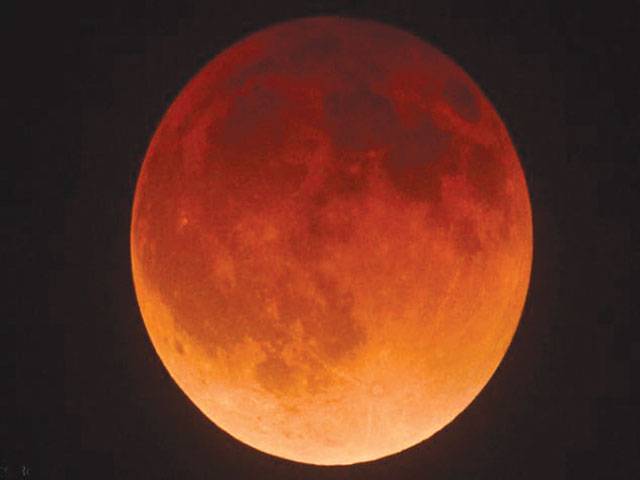Berlin - Fresh evidence has been uncovered for the theory that our moon was created by a collision between Earth and a planet-sized object some 4.5 billion years ago. German scientists studied moon rocks gathered by astronauts nearly a half-century ago in the Apollo 11, 12 and 16 missions.
They say the results show Earth was hit by a huge object called ‘Theia’ which led to the moon’s formation. They analysed various kinds of oxygen atoms and found the moon rocks have a different makeup than Earth rocks do.
The idea that the moon was created in this way has been called the ‘Giant Impact Hypothesis.’ The results also suggest that the moon may be a 50-50 mix of material from this object and from Earth. That fits with the idea that the moon would contain material from the object that struck Earth.
‘I think that most people believe in the Giant Impact Hypothesis,’ said the study’s lead author, Daniel Herwartz, a geologist at Georg-August-Universität in Göttingen, Germany. ‘And now that we have solved one of the last gaps in explaining it, those who criticise it will have a hard time.’
The study was published in the journal Science. Previous efforts to confirm that the impact had taken place had centred on measuring the ratios between the isotopes of oxygen, titanium, silicon and others. These ratios are known to vary throughout the solar system, but their close similarity between Earth and Moon conflicted with theoretical models of the collision that indicated that the Moon would form mostly from Theia, and would be expected to be compositionally different from the Earth.
The German researchers used more refined techniques to compare the ratios in lunar samples, with those from Earth. The team initially used lunar samples which had arrived on Earth via meteorites, but as these samples had exchanged their isotopes with water from Earth, fresher samples were sought.
These were provided by Nasa from the Apollo 11, 12 and 16 missions; they were found to contain significantly higher levels of 17O/16O than their Earthly counterparts. ‘The differences are small and difficult to detect, but they are there,’ said Dr Herwartz said.
‘This means two things; firstly we can now be reasonably sure that the Giant collision took place. Secondly, it gives us an idea of the geochemistry of Theia. ‘Theia seems to have been similar to what we call E-type chondrites.
Monday, November 18, 2024
Earth was hit by giant object as big as Mars 4.5b years ago

Caption: Earth was hit by giant object as big as Mars 4.5b years ago
Pak, China academicians participate in BRI bio-health symposium
November 18, 2024
Several plans afoot for Paharpur’s development: KP Governor
November 18, 2024
Low COVID-19 vaccine coverage causes rise in Diphtheria cases in KP
November 18, 2024
Saif lauds services of Paraplegic Centre
November 18, 2024
Govt working to align education with needs of modern era: KP minister
November 18, 2024
-
Pakistan’s judiciary champions climate justice at COP29 in Baku
-
Pakistan’s judiciary champions climate justice at COP29 in Baku
-
Punjab struggles with persistent smog as Met Office forecast rainfall
-
Punjab residents face escalating smog crisis as pollution levels soar across country
-
Qatar says Hamas 'no longer welcome' in Gulf state
-
Allama Iqbal's birth anniversary being observed today
Agricultural Alarm
November 17, 2024
Cost of Inaction
November 17, 2024
Navigating Global Blocs
November 17, 2024
Tightening Screws
November 16, 2024
EV Policy
November 16, 2024
Establishment of New Schools and Colleges in I-14 Sectors
November 17, 2024
Seasonal Price Fluctuation
November 17, 2024
Climate Literacy: A National Need
November 17, 2024
Let’s Rush to Save the Earth
November 17, 2024
Internet Woes Impacting Pakistan’s Freelancers
November 16, 2024
ePaper - Nawaiwaqt
Nawaiwaqt Group | Copyright © 2024





